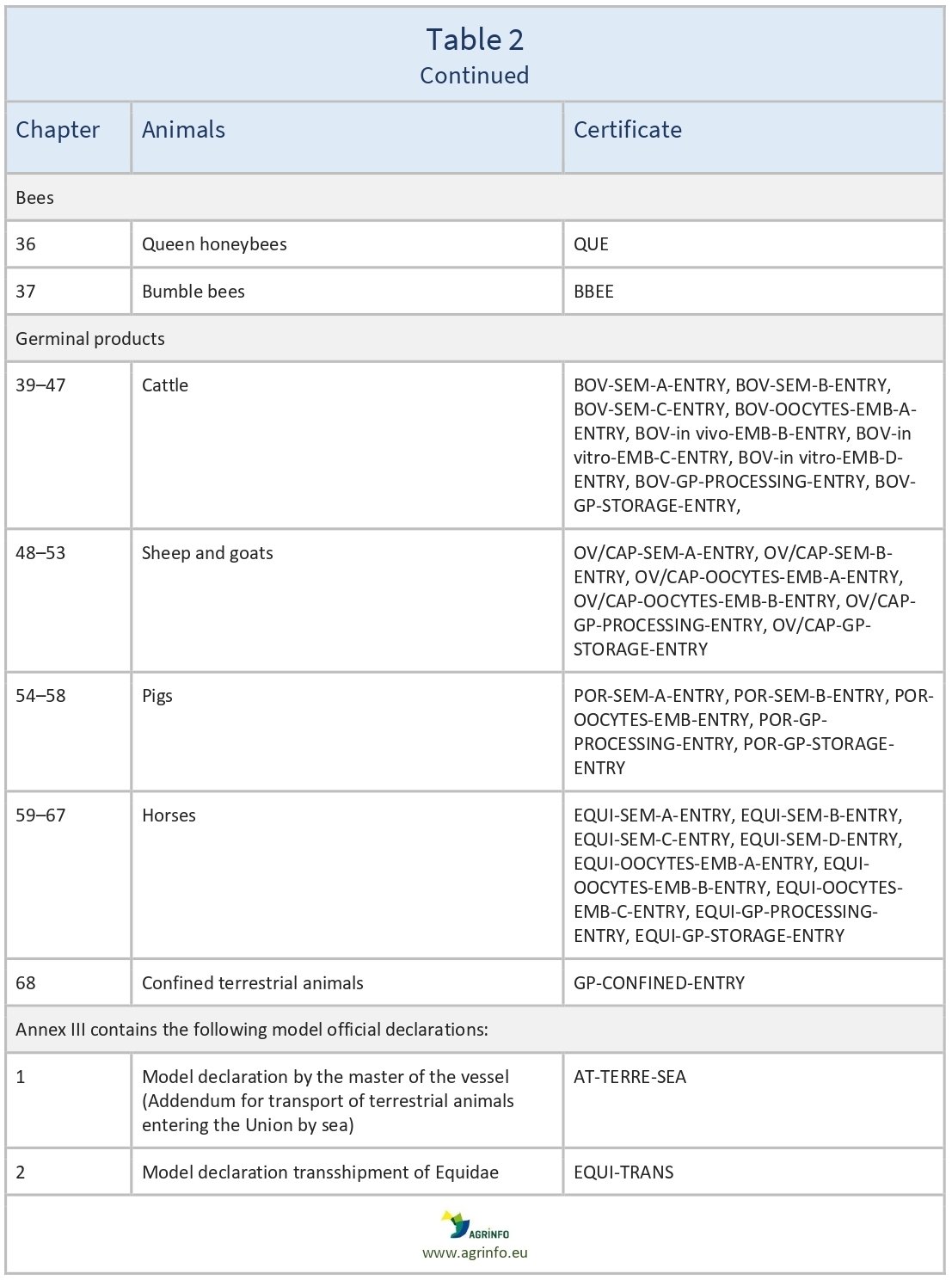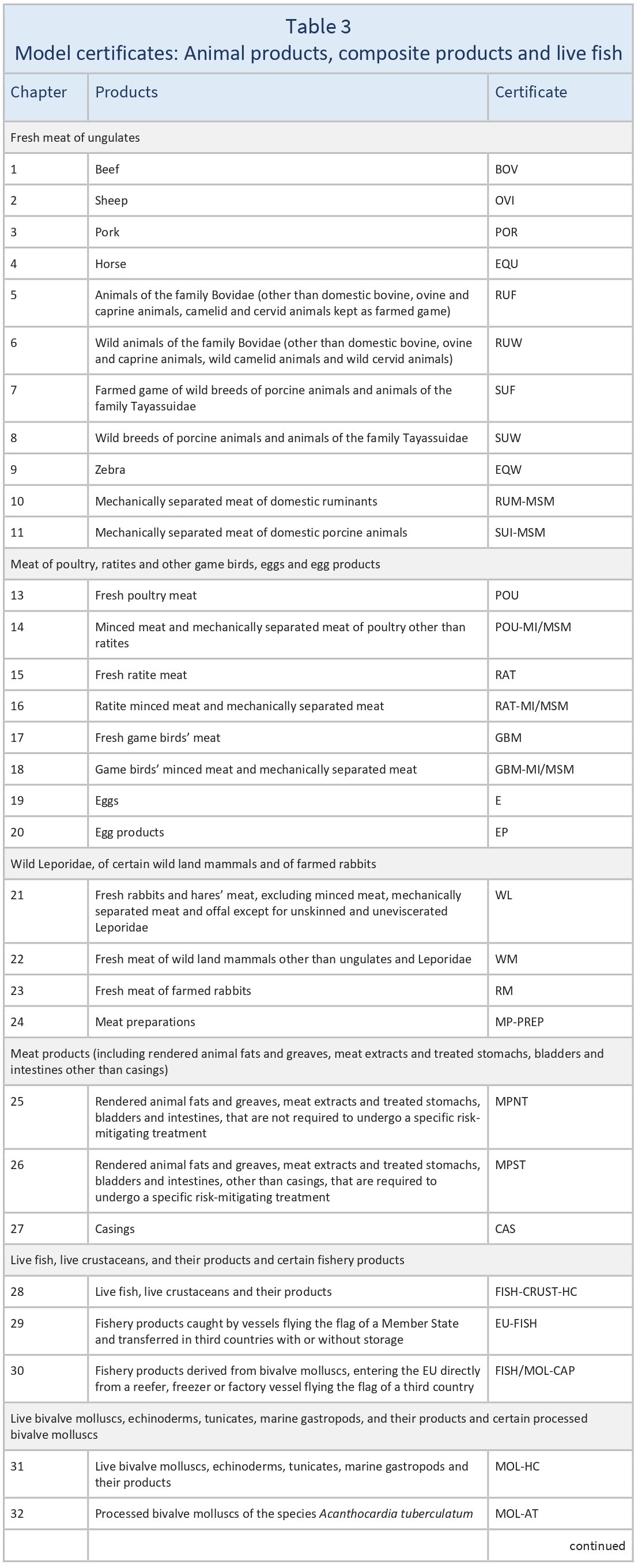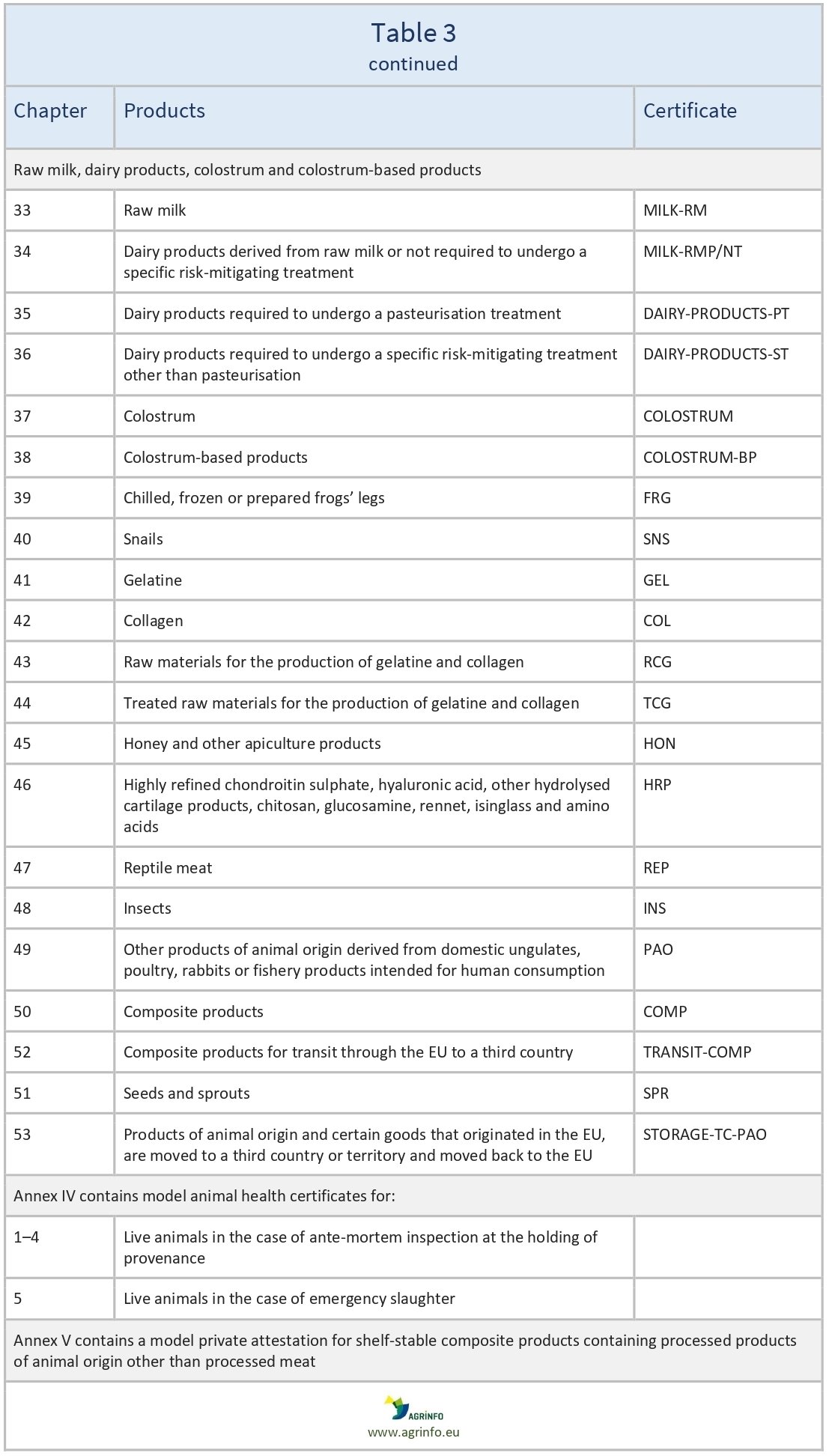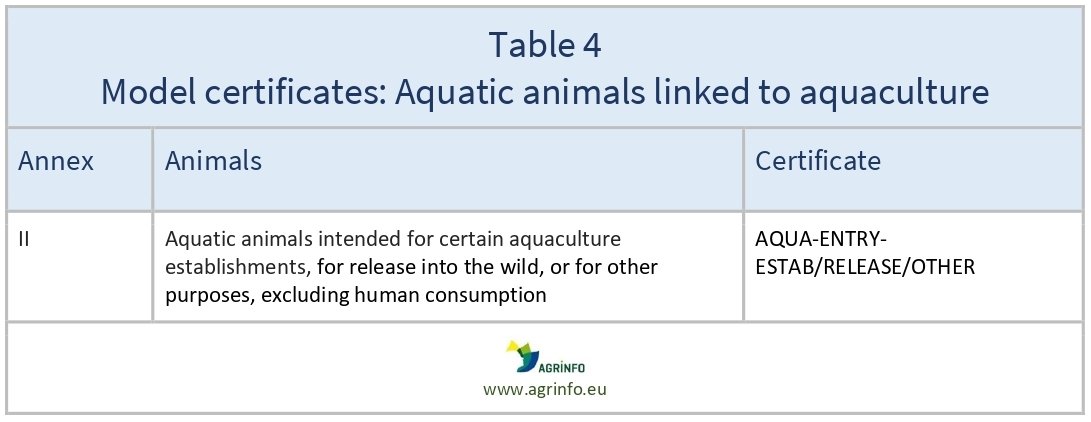EU official health certificates for exports to the EU – explained
- Animal health certification
Summary
Overview of the rules relating to EU official certificates required for exporting animals and animal products to the EU.
Rules on official certificates required for exporting animals and animal products to the EU
Model health certificates for animals and animal products are laid down in three Regulations:
Commission Implementing Regulation (EU) 2021/403 for live terrestrial animals and germinal products
Commission Implementing Regulation (EU) 2020/2235 for animal products, composite products and live fish
Commission Implementing Regulation (EU) 2020/2236 for aquaculture
Update
Overview of the rules relating to EU official certificates required for exporting animals and animal products to the EU.
Background
The basic obligation to provide certificates when exporting to the EU is laid down in two complementary acts: the EU Official Controls Regulation and the EU Animal Health Law. In addition, Delegated Regulation (EU) 2020/692 gathers together most of the rules for exporting from third countries to the EU regarding the health requirements for animals and animal products.
The Official Controls Regulation, (EU) 2017/625:
- defines and explains the official certificate (Art. 3(27); Arts. 86–90)
- foresees the obligation to show the original official certificate at the border control post (Art. 50)
- specifies follow-up of decisions taken in relation to non-compliant consignments entering the EU from third countries (Art. 68)
- lays down pre-export controls by third countries during which competent authorities must control the content of the official certificates (Art. 73)
- foresees that Commission experts may perform controls in third countries to verify the compliance or equivalence of third-country legislation and systems, and the issuance of official certificates (Art. 120)
- foresees a possibility of equivalence of measures applied in a third country or its regions (Art. 129)
- lays down actions in the event of non-compliance (Art. 138).
The Animal Health Law, (EU) 2016/429:
- states the obligation for an animal health certificate issued by the competent authority of the third country and verified and signed by an official veterinarian, with electronic format possible via TRACES (Art. 237)
- foresees the content of animal health certificates (Art. 238).
Overview
Animal health official certificates
Consignments of animals and animal products from third countries to the EU must be accompanied by an official certificate containing all the relevant information about the consignment.
Animal health official certificates must contain:
- public health attestation
- animal health attestation
- animal welfare attestation (for meat)
(see Table 1 for detail of each attestation and regulatory framework).
Certificates must be signed by official authorities in third countries (official veterinarian for animals and animal products; certifying officer in other cases). This guarantees that only consignments in compliance with the EU legislation are exported to the EU.
Certificates are always checked by EU official controllers at border control posts.
Certificates may be paper or electronic. The electronic form must be submitted via the EU system TRACES NT (see TRACES NT Documentation).
The minimum content to include in the official certificates is (Regulation (EU) 2016/429 Art. 238):
- establishment of origin and destination (names and addresses)
- description of the commodity (species, category, type)
- quantity (number, volume, weight)
- traceability (identification, registration, marking)
- demonstration of compliance with EU law.
A single mistake in the certificate is sufficient for a consignment to be rejected at the point of entry into the EU. It is crucial that the certificate is filled in carefully both by the operator and/or by the third country competent authority.
For example, a common mistake is to incorrectly state the weight of the goods. While not a sanitary issue, this will lead to rejection of the goods.
Issuing animal health certificates
The timing for issuing animal health certificates is set out in Regulation (EU) 2020/692.
- Third countries must be on the EU lists (see AGRINFO explainers Third country lists for animal health and Third country lists for public health). Certificates cannot be issued before the date of listing for the particular species and categories of animals, germinal products and products of animal origin (Art. 4).
- In the case of live animals and hatching eggs, the certificate must be issued within 10 days prior to the consignment’s arrival. This period can be extended if consignments are travelling by sea (Art. 3c).
- No specific dates apply for consignments other than live animals and hatching eggs.
Model certificates
- Live terrestrial animals and germinal products: Implementing Regulation (EU) 2021/403 (see Table 2)
- Animal products, composite products and live fish: Implementing Regulation (EU) 2020/2235 (see Table 3)
- Aquaculture: Implementing Regulation (EU) 2020/2236 (see Table 4)
Timeline
Date of publication:
Date of application: 21 April 2021
End of transitional period: 15 March 2022
What are the major implications for exporting countries?
Any error in filling in the certificate may result in the rejection of consignments at the EU border. It is essential to pay attention to the information provided in the certificates, and to adapt the certificates whenever the EU Regulations are updated. These changes are highlighted by AGRINFO when they occur.
For animals and animal products, there are about 100 different models. It is crucial to identify the correct one to use.
Resources
Online resources from the European Commission:
- About the Animal Health Law
- Animal health is your health [in 24 languages]
- Video: Animal Health Law [in 24 languages]
- List of delegated and implementing acts (as of 5 September 2022)
- TRACES NT Documentation
Sources
Disclaimer: Under no circumstances shall COLEAD be liable for any loss, damage, liability or expense incurred or suffered that is claimed to have resulted from the use of information available on this website or any link to external sites. The use of the website is at the user’s sole risk and responsibility. This information platform was created and maintained with the financial support of the European Union. Its contents do not, however, reflect the views of the European Union.






